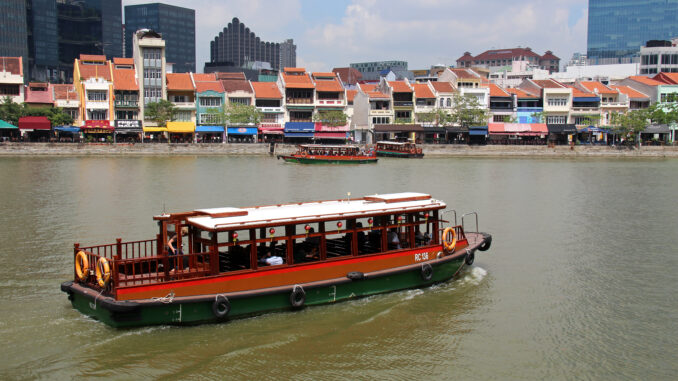
Singapore may be one of the smallest countries in the world, but for travel photographers, it offers a vast canvas. The city-state is a kaleidoscope of ultramodern skyscrapers, lush gardens, centuries-old temples, and vibrant neighborhoods, all compressed into a space small enough to explore in just a few days. Its accessibility, safety, and visual contrasts make it one of Asia’s most rewarding destinations for photographers.
The Futuristic Cityscape
Few places photograph as dramatically as Singapore’s waterfront skyline. At Marina Bay Sands, sunrise lights up the glass towers, while blue hour and night transforms the area into a glowing reflection pool.
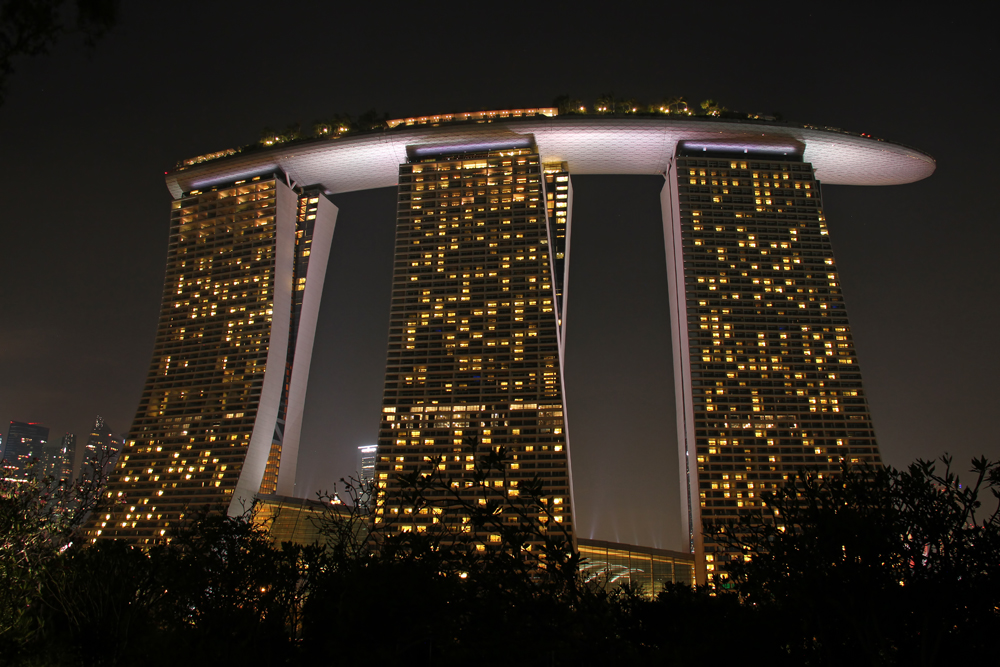
The Helix Bridge provides sweeping lines for composition, and the Merlion Park viewpoint frames the skyline across the water.
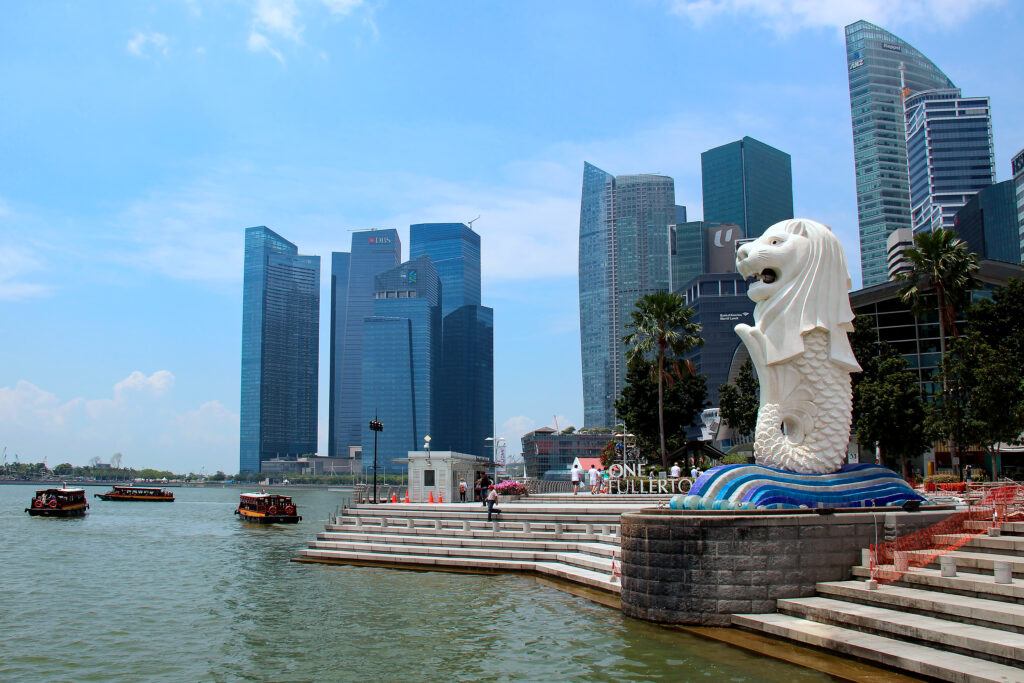
Rising like a white lotus on the bay, the ArtScience Museum adds sculptural elegance to the scene. Its ten curved “petals” catch the light at different times of day, while its reflecting pools create opportunities for symmetry and abstraction. From across the harbor, it pairs beautifully with the Marina Bay Sands towers; up close, wide-angle shots reveal its sweeping organic lines.
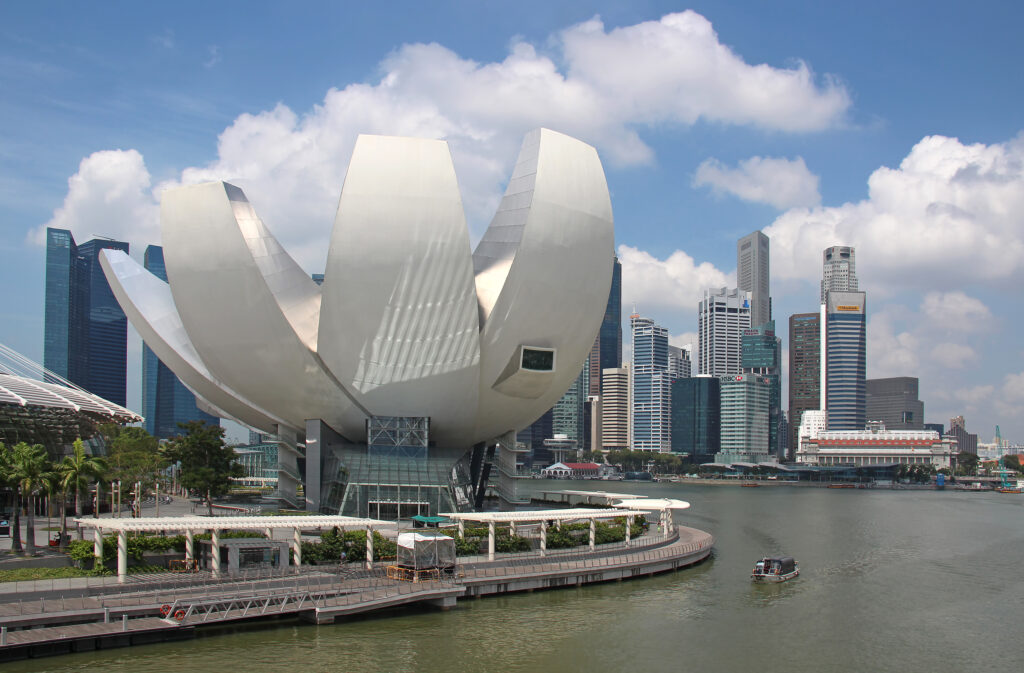
Don’t miss Gardens by the Bay, where the Supertrees rise like futuristic giants, their towering frames draped in greenery that changes with the seasons. These vertical gardens are just as striking under the sun as they are during the nightly light shows, offering dramatic scale and texture for wide-angle shots.
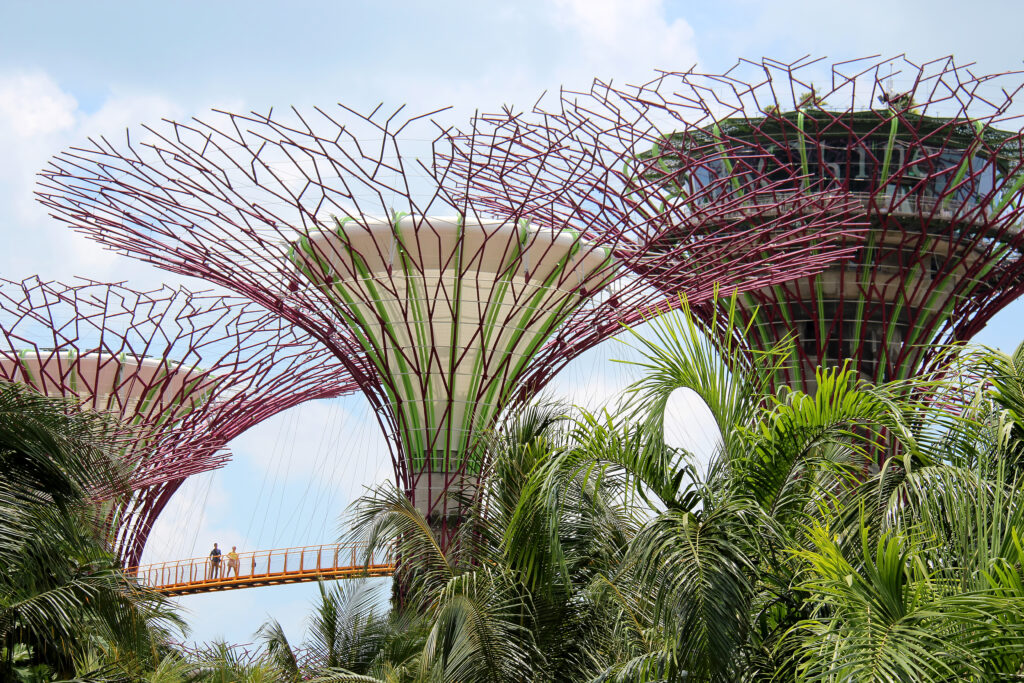
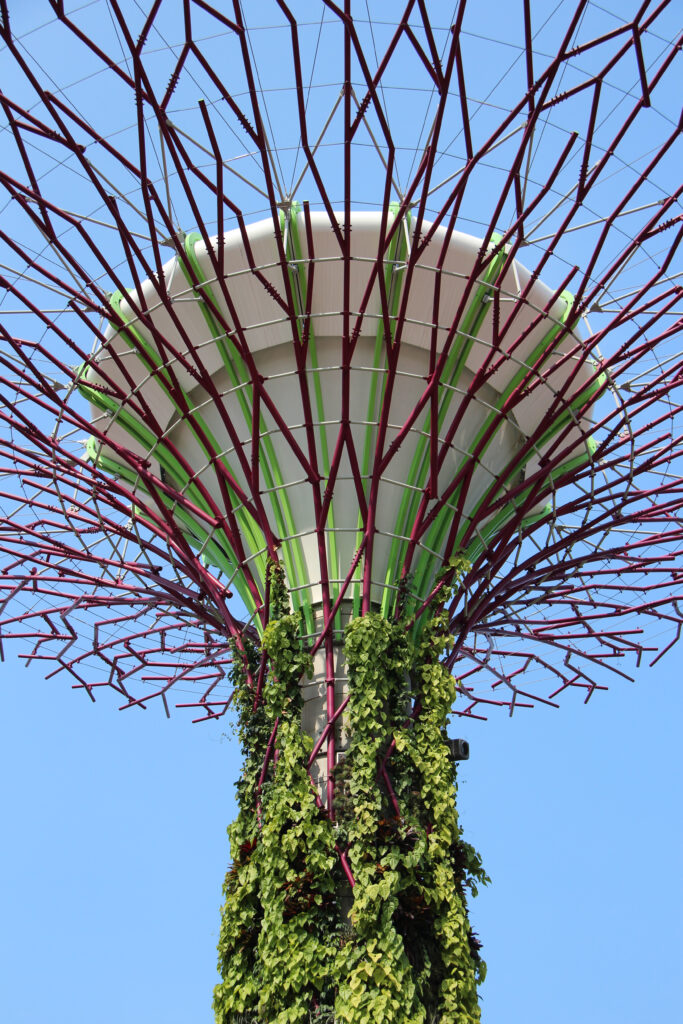
Inside, the Cloud Forest Dome creates an ethereal world of mist and waterfalls that contrasts beautifully with the outdoor structures. For more architectural variety, the spiky Esplanade – Theatres on the Bay and the sleek bridges surrounding the bay provide endless geometric studies.
Cultural Contrasts
Beyond the skyline, Singapore’s historic neighborhoods reveal the city’s soul. Each carries a story of migration, trade, and cultural blending that has shaped the nation for centuries.
Chinatown was established in the 19th century when Chinese immigrants arrived to work as laborers, merchants, and traders. Today, the red-and-gold Buddha Tooth Relic Temple rises above shophouses once used as clan associations and shopfronts. Photographers will find a rich mix of old and new here — from incense smoke curling at temple doors to neon-lit souvenir stalls.
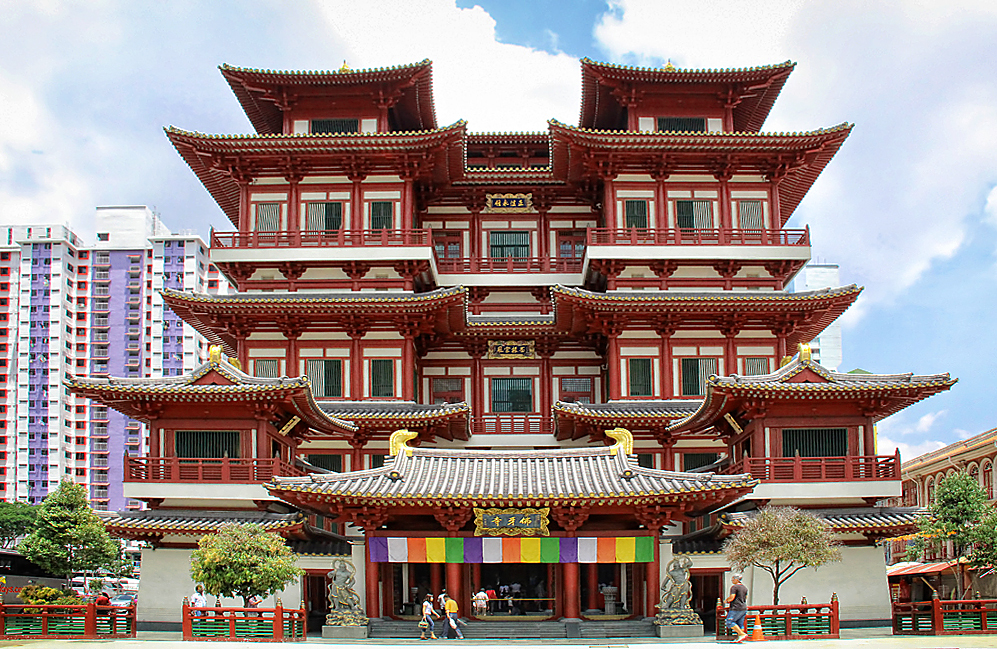
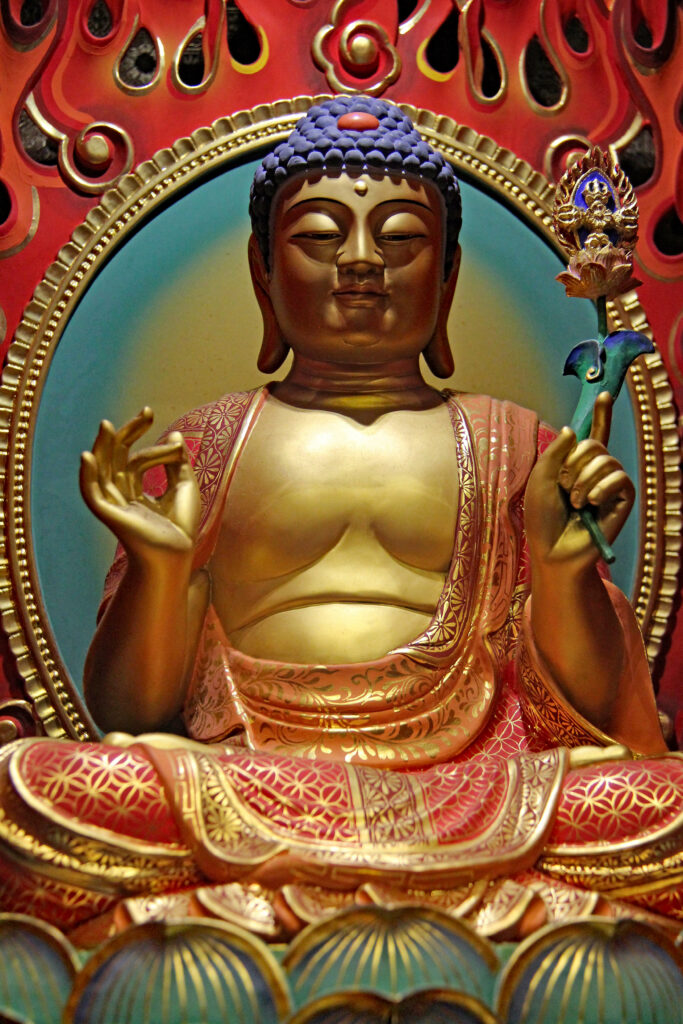
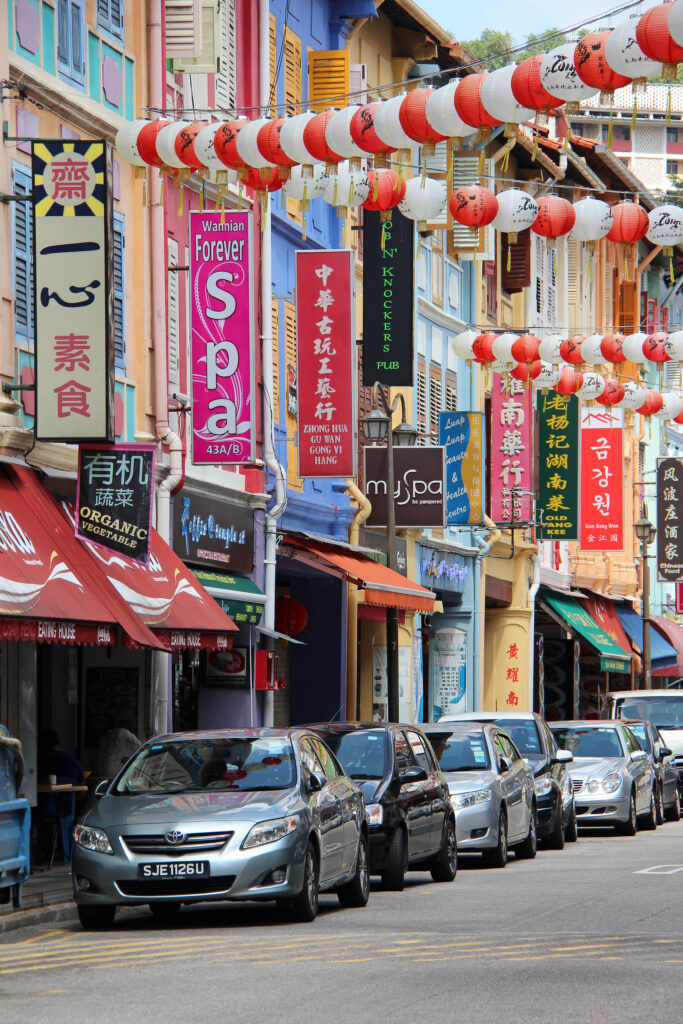
In Little India, the streets still echo the rhythms of the Tamil community who settled here under British colonial rule, originally drawn by cattle trading and later by spice and textile businesses. Today, the district is a burst of color — sari shops, vibrant murals, and the intricately decorated Sri Veeramakaliamman Temple, one of Singapore’s oldest Hindu temples. The visual richness makes every corner a photograph waiting to happen.
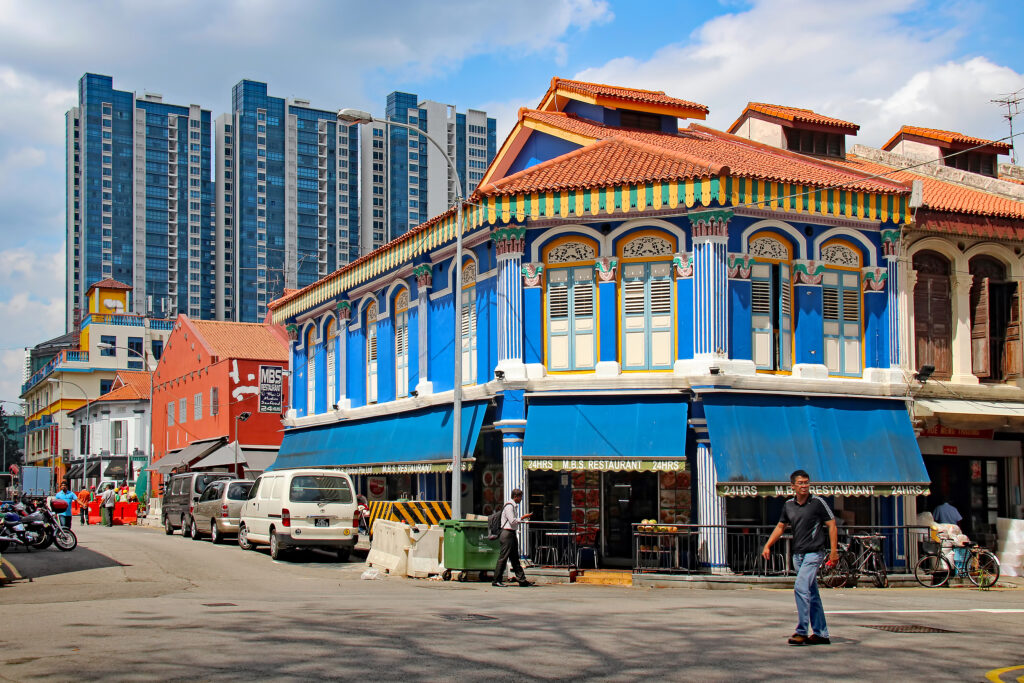
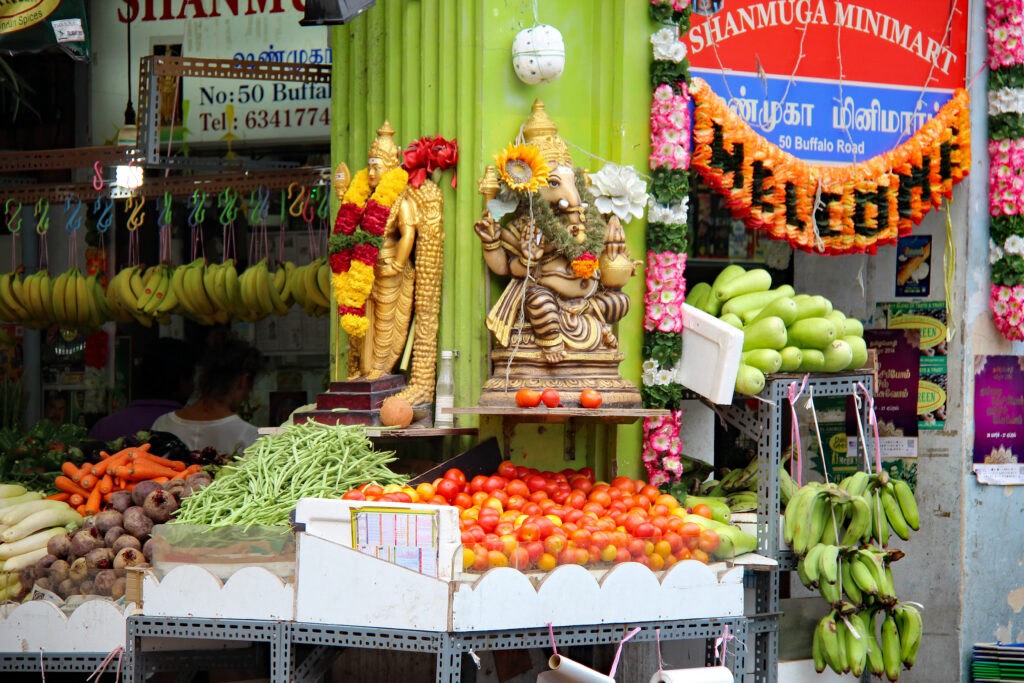
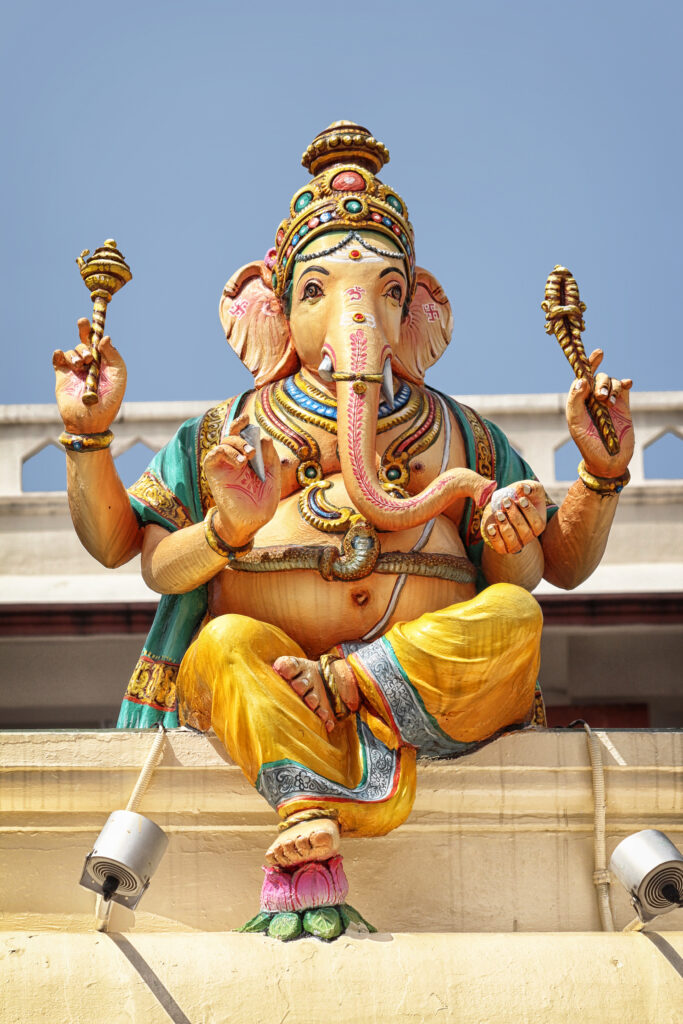

Kampong Glam, once the seat of Malay royalty, remains centered around the grand Sultan Mosque, built in 1824 with its distinctive gold dome. The surrounding Arab Street and Haji Lane were once home to traders dealing in spices, fabrics, and perfumes. Now, they bland that heritage with modern cafes, boutiques, and street art — a place where tradition and trend meet.
Clarke Quay, once the heart of Singapore’s 19th-century river trade, is now one of the city’s most photographed riverside districts. By day, the pastel-painted shophouses pop against the blue sky, while the Singapore River adds reflective foregrounds for composition. Wide shots capture the curved arc of the quay, while tighter frames highlight the architectural details and bold color palette. Clarke Quay’s playful hues and heritage architecture make it a rewarding daytime stop for photographers — but it’s also a wonderful place to stroll at night.
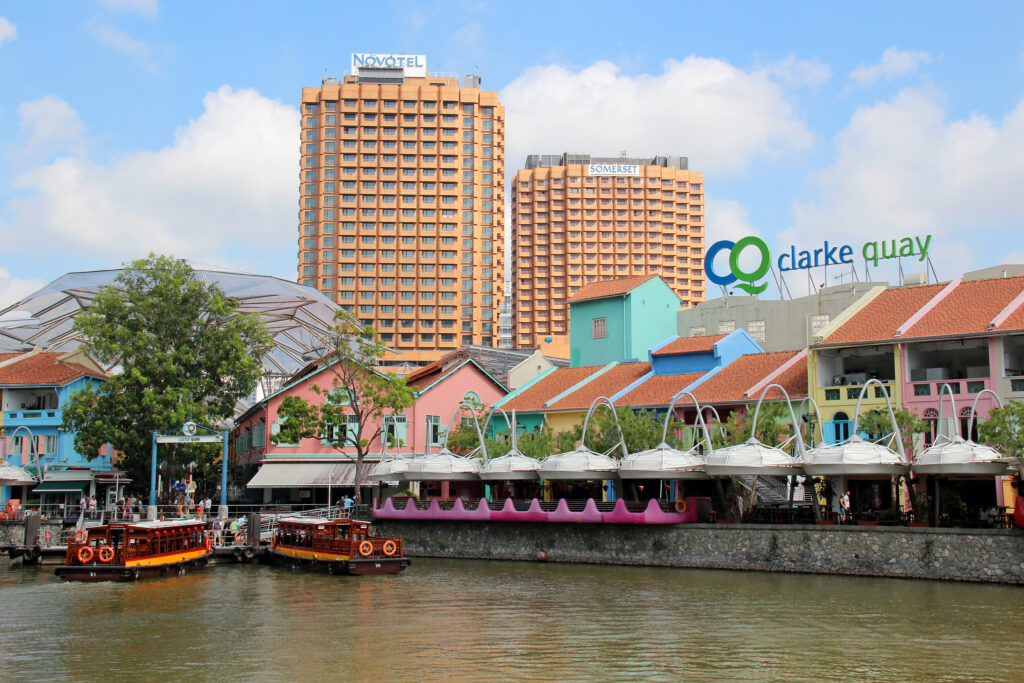
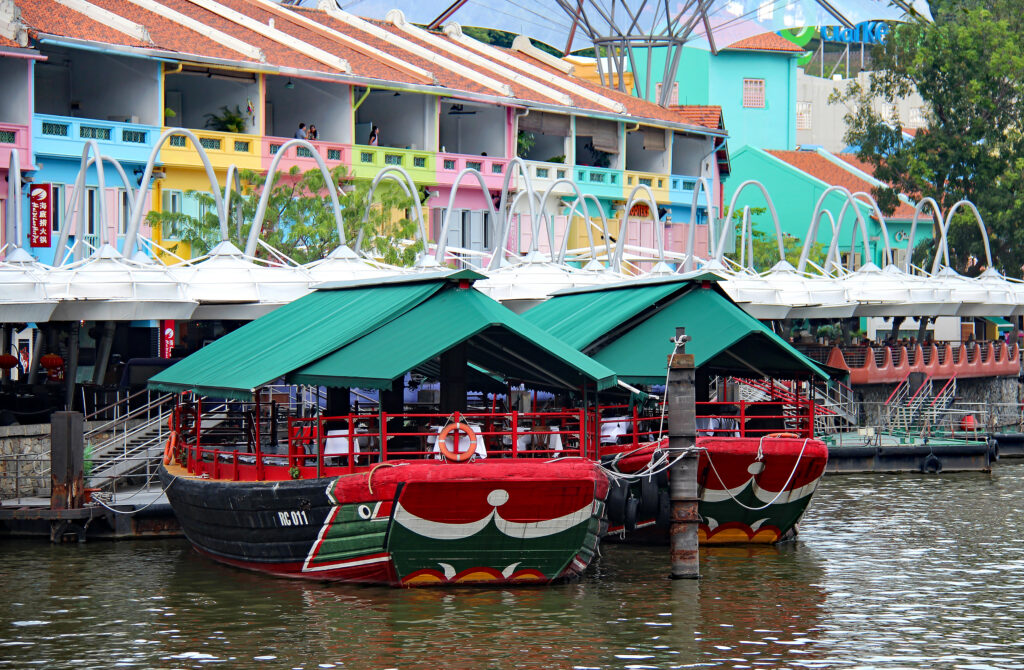
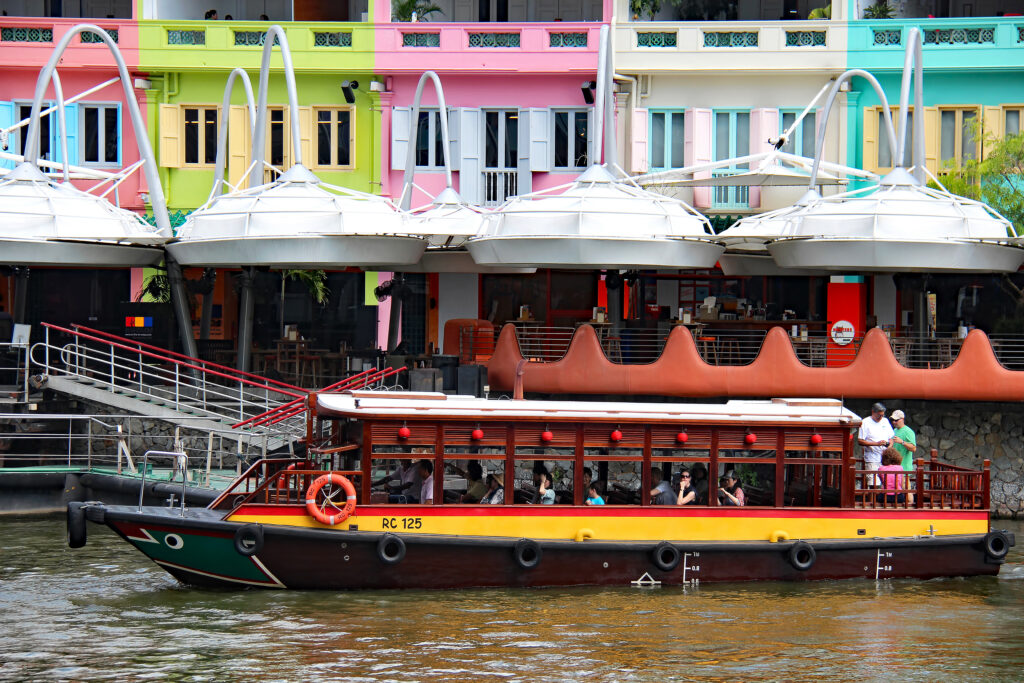
Photographing these neighborhoods means capturing more than architecture or colors. It’s a chance to document living history — a visual story of how migration, trade, and faith created Singapore’s multicultural identity.
Green Escapes
Despite its density, Singapore remains a “City in a Garden.” The Singapore Botanic Gardens, a UNESCO World Heritage site, offers peaceful landscapes, exotic orchids, and even resident monitor lizards. For more adventurous shots, head to MacRitchie Reservoir for reflections at sunrise and the treetop walk.
A short boat ride takes you to Pulau Ubin, where traditional kampong houses and mangroves feel like a step back in time. Photographers seeing nature-meets-design will love the Henderson Waves Bridge along the Southern Ridges, an undulating walkway suspended over tropical forest.
For an easier, urban alternative, stroll the Bay Walk (Marina Bay Waterfront Promenade). This landscaped pathway circles the bay, offering both greenery and sweeping skyline views. Photographers can capture sunrise light on the ArtScience Museum, blue-hour reflections of the skyline, or gardens and sculptures. In the evening, it becomes a perfect vantage point for the Spectra Light Show, blending natural stillness with the city’s energy.
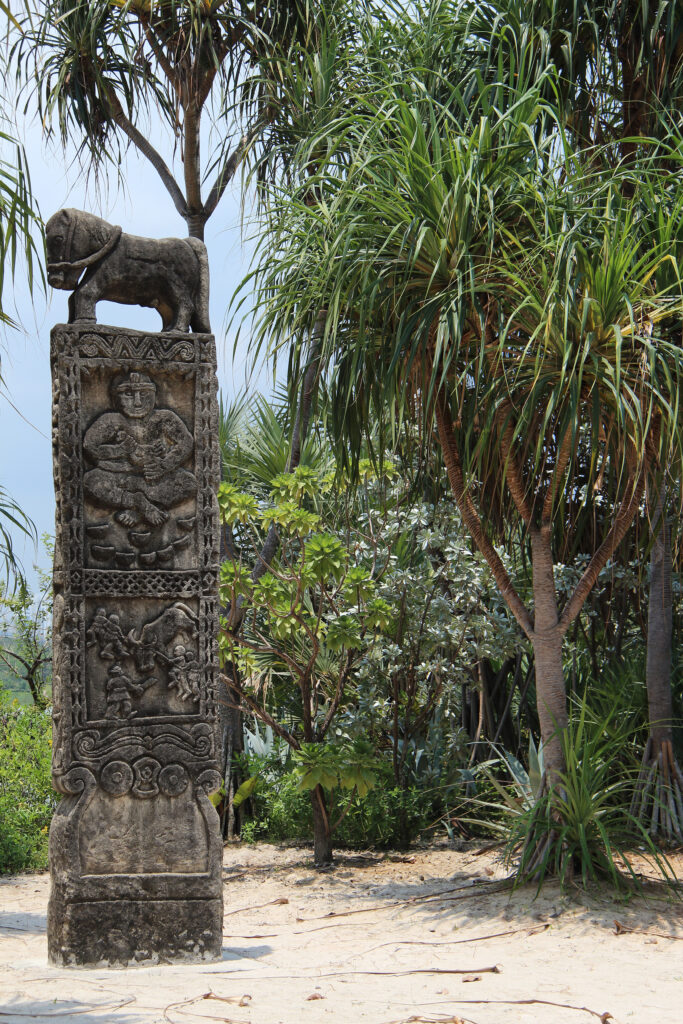
Sentosa Island: Singapore’s Coastal Escape
Just a short stroll across the bridge from the mainland, Sentosa Island offers a completely different photographic experience from Singapore’s dense urban core. While the city dazzles with skyscrapers and neon, Sentosa invites a more relaxed, tropical perspective — beaches, coastal views, and playful architecture.
Beaches and Coastal Landscapes
Sentosa’s sandy beaches, including Palawan and Silos, are ideal for sunrise and sunset photography. Reflections in the wet sand, gentle waves, and silhouettes of people or palm trees create serene compositions. The suspension bridge at Palawan Beach, often claimed to mark the southernmost point of continental Asia, makes a striking leading line for coastal shots.
Iconic Structures and Views
The Fort Siloso Skywalk offers elevated vistas over the island the surrounding South China Sea, perfect for wide-angle or telephoto compositions that juxtapose natural and built environments. The cable cars connecting Sentosa to the mainland also provide a unique aerial viewpoint of the city skyline and harbor.
Fort Siloso, at the end of the Skywalk, is Singapore’s only preserved coastal fort. Built in the late 19th century to defend the harbor, it now houses World War II-era guns, tunnels, and restored barracks. For photographers, the fort offers moody interiors, textured stone walls, and relics that contrast sharply with Sentosa’s otherwise playful, resort-like energy. Low-angle shots of the massive artillery against the sky emphasize scale, while the dimly lit tunnels invite more atmospheric, documentary-style compositions.
Playful and Immersive Scenes
Sentosa is home to colorful attractions and sculptures, which add whimsy and vibrancy to your photos. Even if you skip the theme parks, the island’s pathways, gardens, and architectural details — like the Tanjong Beach Club or resort facilities — provide texture and contrast for more intimate compositions.
Practical Notes for Photographers
- Early morning offers soft light and fewer crowds.
- Coastal breezes can create haze or spray — lens cloths and protective films are useful.
- Sunset silhouettes of people, palms, or cable cars can produce dramatic, moody images without needing to enter any attractions.
Sentosa is a reminder that Singapore’s photographic appeal isn’t limited to urban skylines — the island delivers tropical color, relaxed energy, and a completely different palette for your images.
After Dark
Singapore comes alive at night. The Spectra Light Show at Marina Bay Sands throws lasers across the skyline, mirrored on the bay’s surface. Just a short walk away, the nightly Garden Rhapsody at Gardens by the Bay turns the Supertrees into glowing giants, synchronized to music. Shooting wide at blue hour will help you capture the illuminated trees in a variety of compositions.
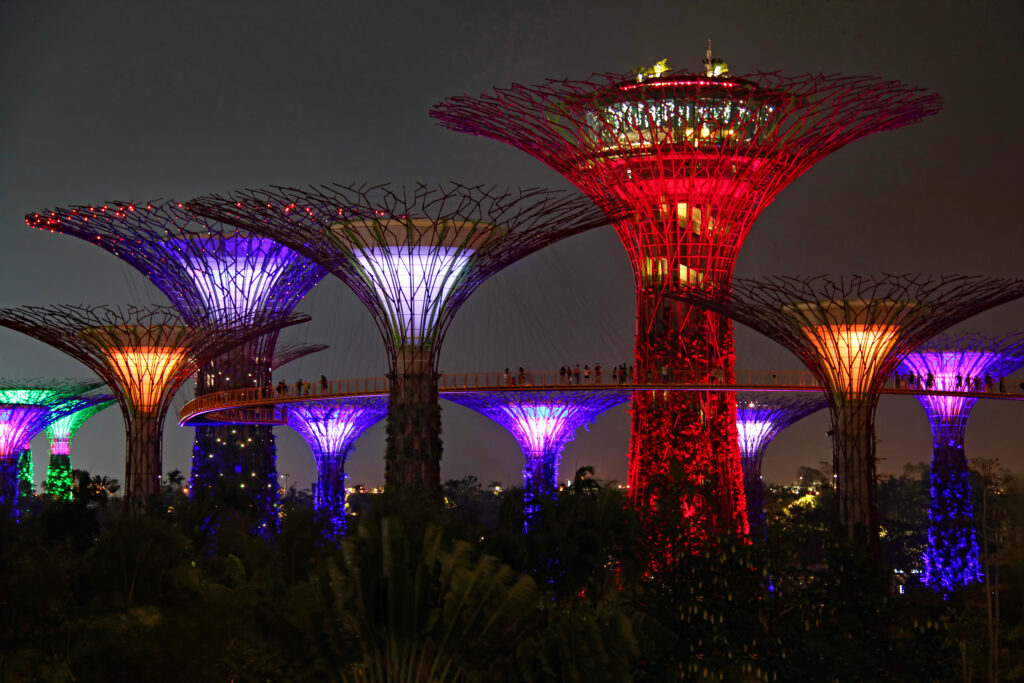
Along Clarke Quay, neon lights splash color onto the Singapore River. Even the airport — Jewel Changi — offers a surreal experience, where the world’s tallest indoor waterfall, the Rain Vortex, glows under shifting lights.
For long exposures, a tripod is essential, but thanks to Singapore’s safety and walkability, carrying gear after dark is worry-free.
Practical Photography Tips
Best Time of Year to Visit
Singapore’s equatorial climate means it is hot and humid year-round, with average temperatures of 80–90°F (27–32°C). Sudden showers are frequent, especially from November to January, but rain often creates reflective streets and moody skies that photographers love. For clearer weather and outdoor shooting, the drier months of February through April are ideal.
Getting Around
The MRT (Mass Rapid Transit) system is clean, efficient, and reaches nearly every point of interest. Grab a stored-value card (EZ-Link or Singapore Tourist Pass) for convenience. Taxis and rideshares are affordable, and most major locations are walkable once you’re in the neighborhood.
Another major advantage for photographers: English is Singapore’s official working language, so signs, announcements, and local conversations are easy to understand. This makes Singapore one of the most accessible Asian countries to visit, especially for travelers who may be less experienced navigating language differences abroad.
Protecting Your Gear
Humidity is Singapore’s biggest challenge for photographers. Keep silica gel packs in your camera bag to fight condensation, and store gear in airtight bags overnight if possible. Sudden rain showers mean a rain cover or even a simple plastic bag is essential. A lightweight travel tripod works well for night shots without being cumbersome in crowded areas.
Lens Care In Humidity
One of the most common problems photographers face in Singapore is condensation when stepping out of heavily air-conditioned spaces into the hot, humid outdoors. Lenses fog quickly, and it can take up to 30 minutes before they clear. To minimize this:
- Keep your gear in your bag when moving between environments so it warms up gradually.
- Use zip-lock or airtight pouches to reduce condensation.
- Carry a microfiber cloth for quick wipes, though prevention is better than constant cleaning.
- If possible, let your gear acclimate for 10-15 minutes before shooting outside.
This extra bit of patience ensures your first shots of a dramatic skyline or bustling street aren’t spoiled by foggy glass.
A Diverse Travel Portfolio
For travel photographers, Singapore is a rare destination where you can capture a futuristic city, traditional temples, tropical nature, and street food culture — all in a single day. Its accessibility, compact size, and striking contrasts reward both quick visits and deeper explorations. Whether you’re chasing skyline reflections, street market colors, the glow of Supertrees against the night sky, or tropical sunsets on Sentosa, Singapore delivers images as diverse as the city itself.
